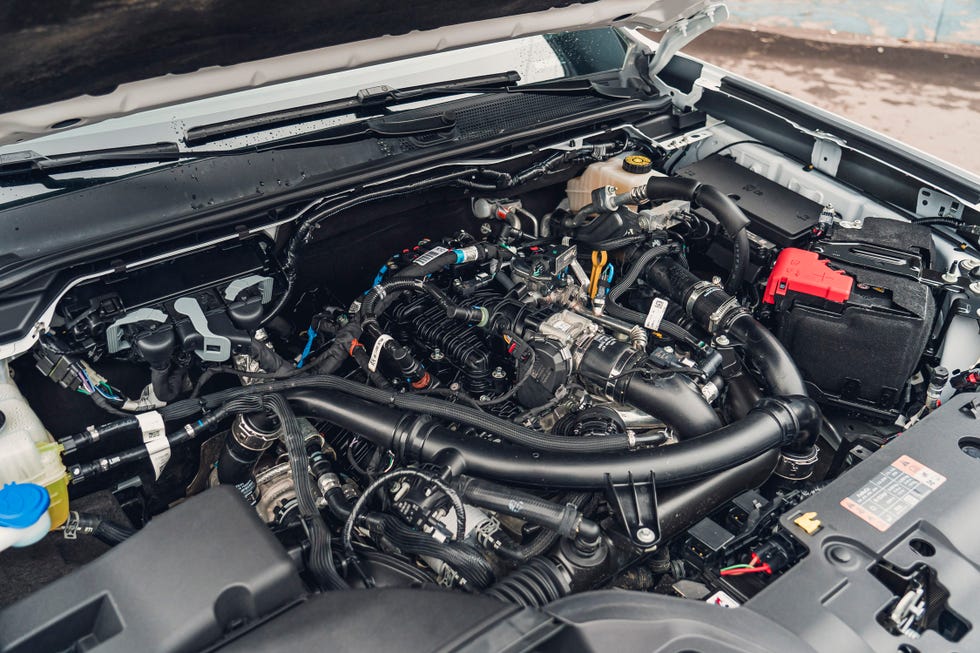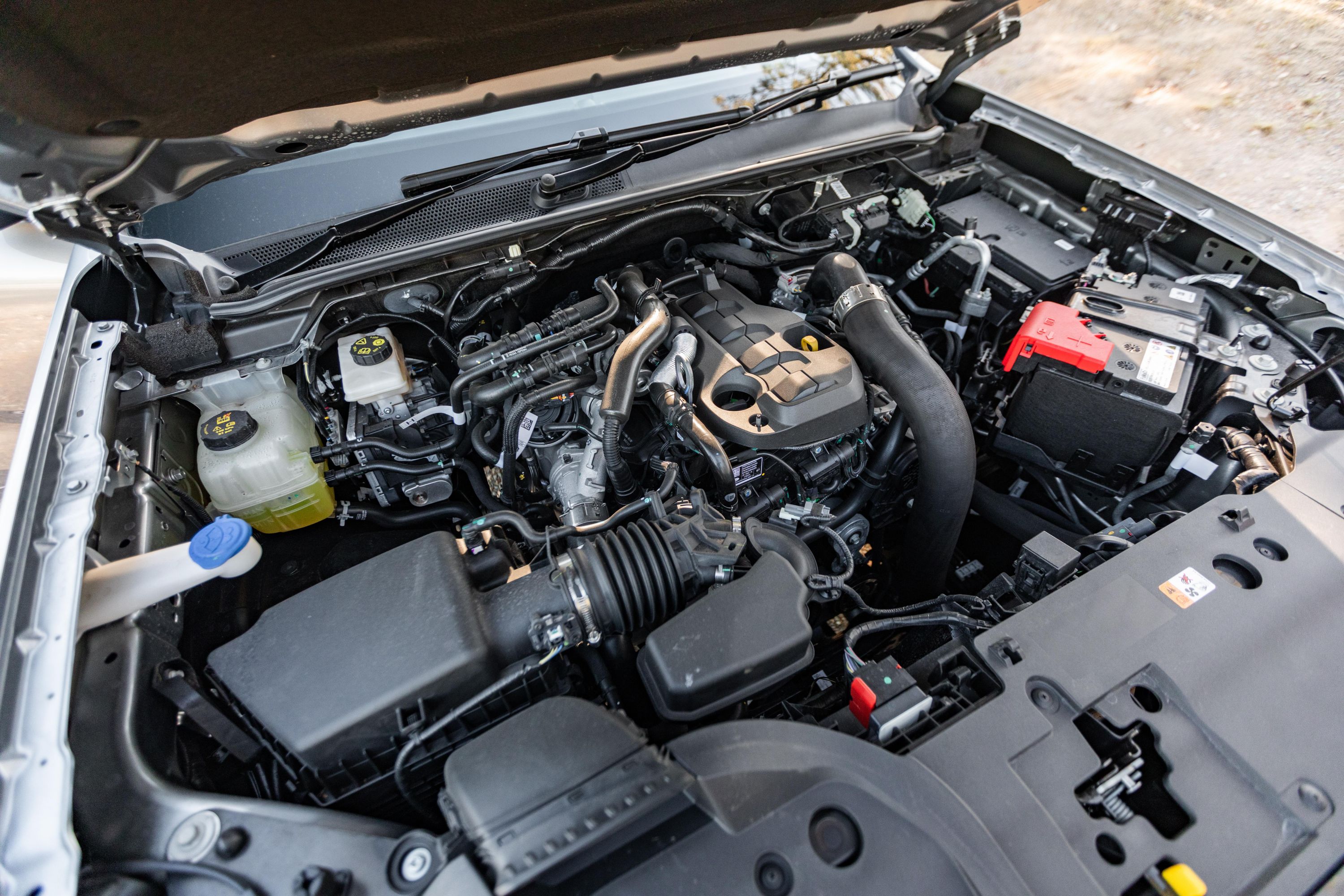Everything You Need to Know About the 2.2 Ford Ranger Engine and Its Performance
Everything You Need to Know About the 2.2 Ford Ranger Engine and Its Performance
Blog Article
Recognizing the Basics of Automobile Engines: Attributes, types, and features
.jpg)
Introduction of Car Engines
An auto engine works as the heart of an automobile, converting fuel into mechanical energy to thrust it ahead. This intricate system makes up different elements that operate in unison to make certain ideal performance and efficiency. The essential operation of a car engine includes the interior combustion process, where fuel and air are combined, stired up, and eliminated to create power.
The engine's layout can substantially affect its efficiency, gas efficiency, and exhausts. Secret elements include the cyndrical tube block, pistons, crankshaft, and camshaft, each playing a vital role in the engine's total function.
In enhancement to these elements, engines commonly make use of numerous systems such as gas shot, ignition, and cooling systems to enhance performance and durability. Comprehending the fundamental technicians of vehicle engines is necessary for identifying problems and carrying out upkeep, inevitably adding to the lorry's integrity and effectiveness gradually.

Types of Car Engines
Car engines can be classified into several kinds based upon their style, gas kind, and operational concepts. 2.2 ford ranger engine. One of the most usual classifications consist of inner combustion engines (ICE), electrical engines, and crossbreed engines
Interior combustion engines, which can be further divided into gas and diesel motor, run by igniting a fuel-air combination to generate power. Gasoline engines are usually lighter and smoother, while diesel motor are extra fuel-efficient and deal higher torque.
Electric engines make use of electrical energy kept in batteries to power an electrical motor, offering instantaneous torque and absolutely no exhausts during operation. As innovation developments, electric vehicles (EVs) are increasingly becoming popular for their environmental benefits and lower running expenses.
Hybrid engines incorporate components of both interior combustion and electric engines, enabling for flexible power resources and enhanced gas effectiveness. They can operate in numerous settings, utilizing either the gas engine, the electrical motor, or both concurrently.
Each kind of engine has distinct advantages and disadvantages, affecting their application in different car types and market sectors, from small cars and trucks to durable trucks. Understanding these types is essential for making notified choices concerning automobile selection and performance expectations.
Engine Features Explained
Understanding engine functions is essential for realizing how vehicles operate effectively. At the core of any kind of internal burning engine lies the basic procedure of converting fuel right into mechanical power.
The ignition happens following, sparking the mix and producing a rapid development of gases. This pressure drives the piston down throughout the power stroke, which ultimately equates right into the rotational motion of the crankshaft. The exhaust stroke then expels the invested gases from the chamber, about his giving way for a brand-new cycle to start.
In enhancement to these main features, engines additionally integrate systems that manage air conditioning and lubrication, guaranteeing optimum operational temperature levels and decreasing rubbing between moving parts. This detailed interaction of features enables the engine to create the power essential for automobile propulsion while maintaining performance and dependability. Recognizing these features supplies beneficial insight into the complexities of vehicle design and enhances the capacity to detect and address engine-related problems efficiently.
Trick Engine Features
Engine design encompasses several key attributes that significantly influence toughness, performance, and efficiency. Among the most essential elements is the engine arrangement, that includes inline, V-type, and flat layouts. Each configuration influences the engine's balance, dimension, and power outcome, therefore influencing general lorry characteristics.
An additional vital function is the engine displacement, referring to the complete quantity of all cyndrical tubes. Larger displacements generally produce more power however might endanger gas efficiency. Engine materials also play a pivotal function; high-strength and lightweight materials, such as aluminum and magnesium alloys, boost efficiency without adding excessive weight.
The kind of gas shot system utilized-- such as multi-port or straight injection-- influences combustion effectiveness and emissions. Turbocharging and turbo charging are features that improve engine efficiency by requiring added air into the burning chamber, increasing power output without substantially increasing engine dimension.
Lastly, the visibility of advanced engine monitoring systems maximizes fuel-air blend and ignition timing, adding to smoother operation and far better fuel economic situation. Collectively, these attributes define an engine's capacities, setting the foundation for its performance and durability in a competitive automobile landscape.
Maintenance Tips for Engines
Appropriate engine upkeep is important for making certain optimum performance and durability, as ignoring routine care can cause significant issues down the line. To keep your engine efficiently, begin with regular oil adjustments, usually every 3,000 to 7,500 miles, depending on the type of oil used. Fresh oil lubricates engine elements, minimizing rubbing and wear.
Furthermore, keeping an eye on coolant levels is crucial to avoid overheating. Guarantee that the coolant is topped up and remains in great problem to preserve efficient temperature level policy. On a regular basis change and check air and fuel filters, as blocked filters can prevent airflow and gas shipment, endangering engine efficiency.
Furthermore, take notice of spark plugs and ignition systems. Used or malfunctioning stimulate plugs can lead to misfiring and lowered efficiency. Checking the battery terminals and connections for corrosion is also crucial, as a weak battery can impact engine beginning.

Verdict
In recap, a detailed understanding of auto engines includes numerous kinds, functions, and key functions that significantly affect vehicle performance. Internal burning engines, together with electrical and hybrid alternatives, show diverse devices for power conversion. 2.2 this ford ranger engine. Recognizing the essential features, such as intake and exhaust cycles, together with vital engine functions like setup and gas injection systems, furnishes auto proprietors with the knowledge needed for efficient upkeep and operation, ultimately enhancing car longevity and effectiveness
A vehicle engine serves as the heart of a lorry, converting fuel right into mechanical energy to move it forward. The basic operation of an automobile engine entails the inner combustion process, where gas and air are combined, stired up, and eliminated to create power.
Frequently replace and examine air and gas filters, as clogged filters can hinder air flow and fuel distribution, compromising engine effectiveness. - 2.2 ford ranger engine
In recap, a detailed understanding of vehicle engines incorporates numerous kinds, features, and crucial attributes that considerably affect vehicle efficiency. Acknowledging the important features, such as consumption and exhaust cycles, along with crucial engine features like setup and gas injection systems, furnishes car proprietors with the expertise needed for reliable maintenance and operation, inevitably improving vehicle longevity and performance.
Report this page